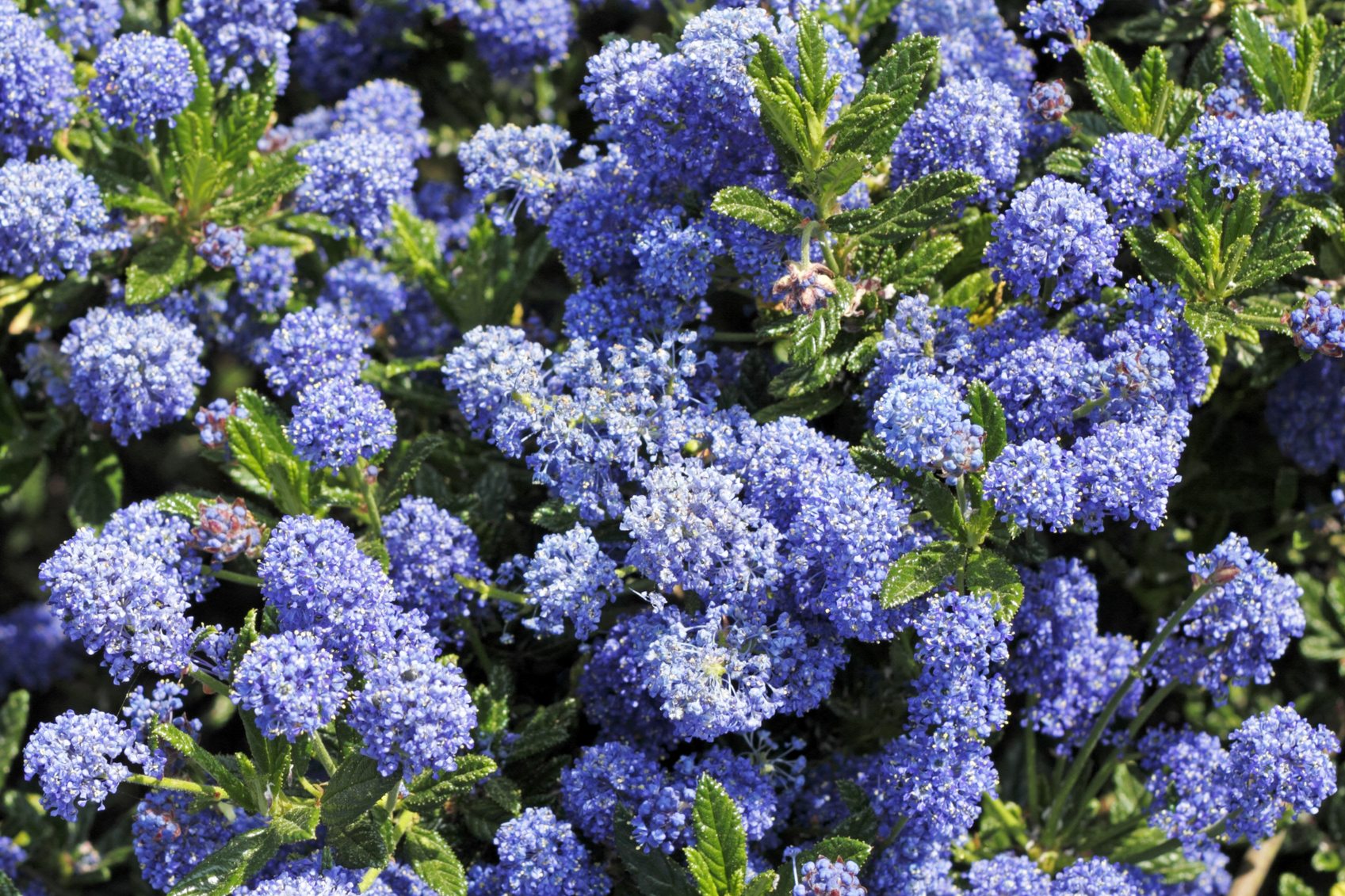California Lilac Information – Get Some Facts On California Lilac Plants


Ceanothus, or California lilac, is a vibrant, attractive flowering shrub native to North America and found across the west growing wild. One of the facts on California lilac is that it is not a true lilac in the genus Syringa, but it does produce amazingly fragrant blooms from late spring into early summer. In most regions, this plant is easy to grow and trouble free. Read on to learn where to plant California lilac and what special care needs this lovely plant requires.
California Lilac Information
California lilac comes in several forms for use in the landscape. Some are upright bushes reaching 8 or 9 feet (2 to 2.5 m.) in height while others are compact, low growing groundcovers that seldom reach more than 6 inches (15 cm.) in height. Plants are evergreen and have small to medium glossy green leaves which accent the bright to light blue flowers. You can see California lilac growing wild in Oregon, California and Washington, and some species are found as far as Guatemala. There are 12 species of Ceanothus native to the Pacific Northwest. These plants prefer dry soil in full sun to achieve the best blooms. Deer are especially fond of California lilac, so protection is required if you live in an area with these browsing animals. Ceanothus leaves are characterized by three parallel leaf veins on their shiny foliage. Larger foliaged plants have entire margins while the small leaved bushes have toothed, almost holly-like leaves. Among the important facts on California lilac is its ability to fix nitrogen in soil, which is a win-win for the home gardener and in nature. The flowers are the real showstopper. Most are in terminal clusters of deep blue, but some forms bear lighter blue, lavender or even white flowers.
Where to Plant California Lilac
The most important aspects in site choice are well-draining soil and full sun. California lilac performs very poorly if situated in a low spot that tends to gather moisture. Plants can thrive in most soils, but best health will be obtained by mixing organic humus into the soil to enrich it. The choices are pretty endless regarding the forms available. Choosing the right size for your area is important, as these plants don't like to be pruned.
- For tree sized Ceanothus, there are Snow Flurry, Ray Hartman, and Gloire de Versailles.
- Medium shrubs might be Concha, Dark Star or Wheeler's Canyon.
- For a sunny groundcover, try Gloriosus, Centennial or Heart's Desire.
Tips on California Lilac Growing
California lilac seems to thrive on neglect. In the first year, water it regularly but once it establishes, the plant only needs water once or twice per month deeply. During the spring and fall, the plant needs no water in areas with adequate rainfall. If deer have been browsing, tip prune the plant only to remove damaged ends. Avoid heavy pruning unless there is dead plant material to remove. Among the California lilac information we have learned is that it's important to pass on fertilizer, which this species dislikes. While you might think annual fertilizer is a good idea for your plants, this is one species that can actually go into a decline if fertilized. Stick with good organic mulch around the root zone and you will have a happier plant.
Gardening tips, videos, info and more delivered right to your inbox!
Sign up for the Gardening Know How newsletter today and receive a free copy of our e-book "How to Grow Delicious Tomatoes".

Bonnie Grant is a professional landscaper with a Certification in Urban Gardening. She has been gardening and writing for 15 years. A former professional chef, she has a passion for edible landscaping.
-
 Zinnias On Repeat: 10 Glorious Cut-And-Come-Again Varieties For Endless Summer Bouquets
Zinnias On Repeat: 10 Glorious Cut-And-Come-Again Varieties For Endless Summer BouquetsThese zinnia varieties keep giving all summer, making them the perfect choice for dedicated cutting gardens – or just the occasional homegrown bouquet.
By Ellen Wells
-
 Create A Romantic Garden Straight Out Of Bridgerton: Regency Era Romance In Your Garden
Create A Romantic Garden Straight Out Of Bridgerton: Regency Era Romance In Your GardenTry some romantic garden ideas straight out of Bridgerton. Flowers and gardens in the Regency era were lush and charming and you can get the same look!
By Bonnie L. Grant